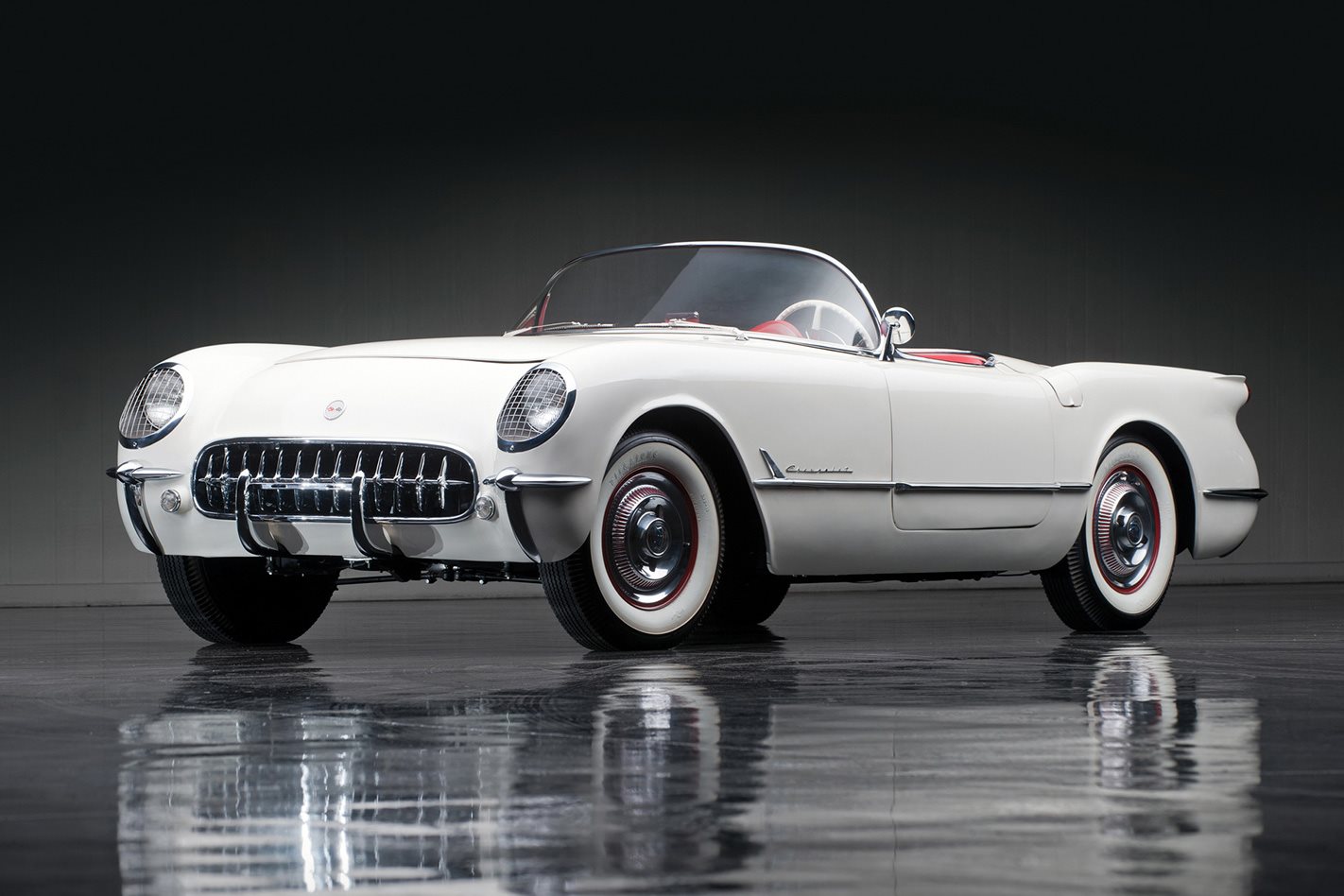You’ll sometimes hear it said that a new model “looks like it drove straight off the motor show stand”. That was pretty much the case with the Chevrolet Corvette C1, not only the first of GM’s now 68-year-old fibreglass-bodied sports car line, but America’s first production sports car.
In January 1953, General Motors kicked off the third of its post-war Motorama vehicle shows (and the first travelling Motorama) at the Waldorf Astoria Hotel in New York. Opening day alone pulled a crowd of 45,000. In addition to the new-for-’53 production models were a handful of concepts, most notably a two-seat roadster.
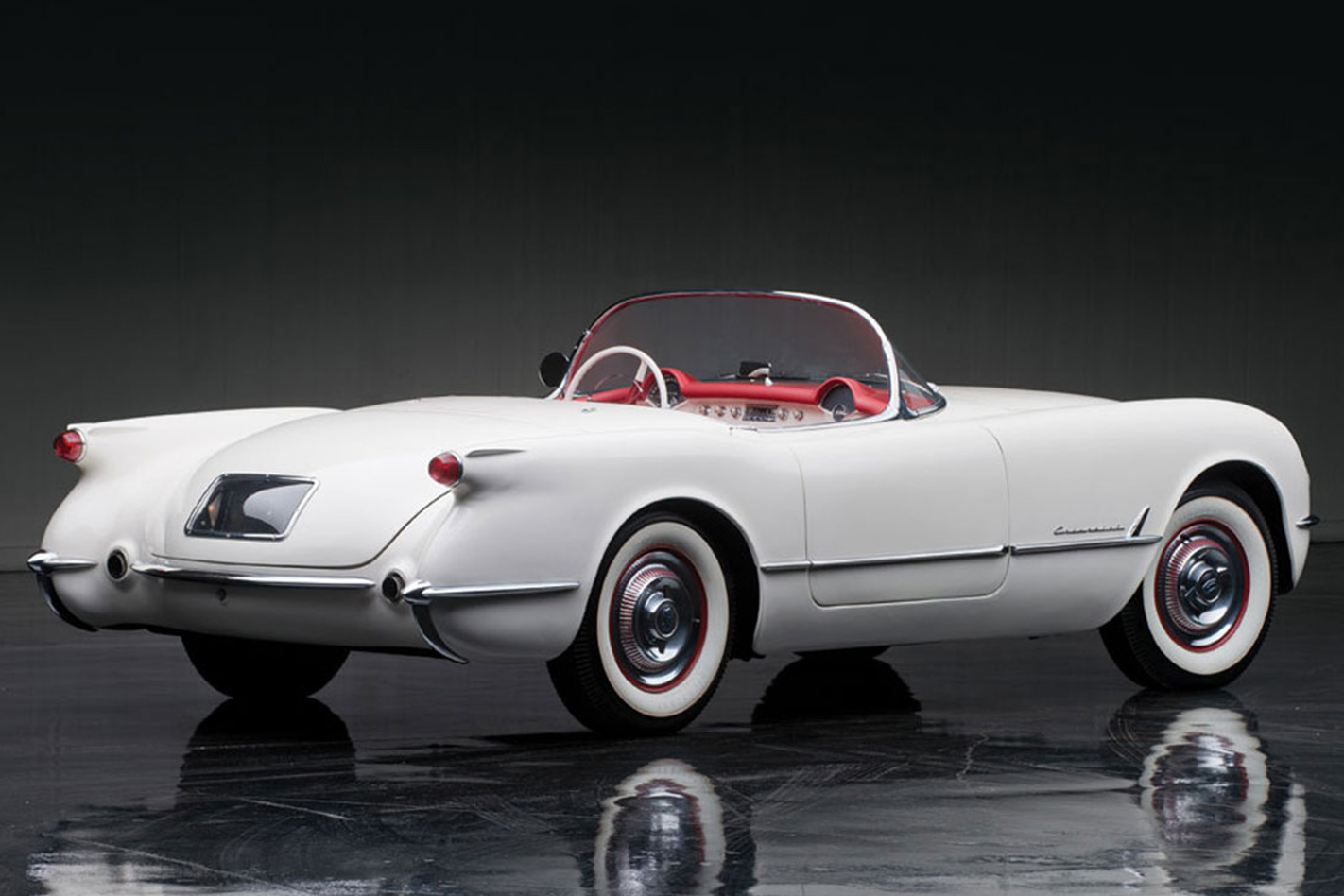
The ‘EX 122’ concept’s shapely body – in new-fangled ‘pressed fibreglass plastic’ – clearly took inspiration from the British and European sports cars then gaining a foothold in the US. GM’s design chief, the legendary Harley Earl, had instructed his styling team to “go all the way and then back off”. From the EX 122’s Ferrari-esque front, through the Jaguar XK-esque proportions, to the Earl-signature tailfins, they didn’t back off much.
Such was the response to EX 122, and the tool-up viability of the shortened sedan chassis and fibreglass body, that Chevrolet rolled the first ‘Corvette’ off the production line on 30 June that year.
With its eye mainly on the Jaguar XK120, Chevrolet had designed the Corvette with a six-cylinder engine, derived from the mundane 235.5ci (3859cc) ‘Powerglide’ sedan unit and its matched, two-speed auto transmission. With Corvette-specific mods helping it reach 112kW, it went into battle against Jaguar’s 120kW, twin-cam XK120.
It flopped, and not only on the road, where the lazy engine, two-speed auto and plainly crude suspension were obliterated by the (amazingly, cheaper) Jaguar. Even the limited build of 300 cars for 1953 were slow to sell. For ’54, the start of full production, an engine tweak and new colours failed to add much spice; almost one third of that year’s 3640 units were unsold by the end of the year. Dealers wanted the Corvette torpedoed.
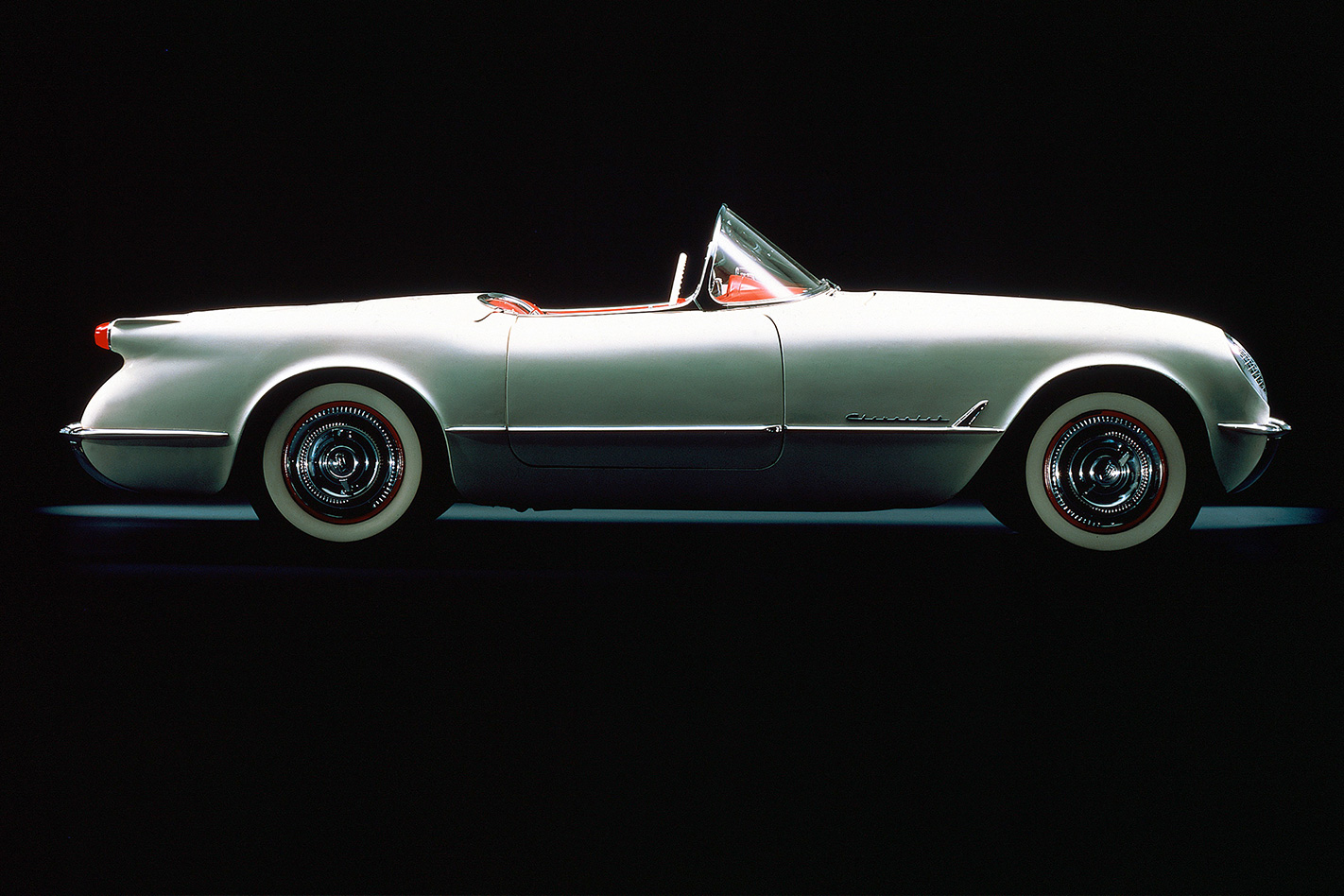
The 1955 arrival of Chevy’s 145kW, 4.3-litre small-block V8, an optional three-speed manual and iron-willed engineer Zora Arkus-Duntov turned the tide just in time. Even so, that year’s limited build of just 700 cars compared with more than 15,000 sales for Ford’s new, cruisy Thunderbird. It wasn’t until 1963, when the C2 series was launched, that the Corvette really got its glass ass on the gas.
Seen through ’glass
Corvette C1 was sensibly sized, measuring 4242mm overall, on a 2590mm wheelbase. The ladder-style chassis was shortened from a Chevy sedan’s. Front suspension was by unequal-length wishbones and coil springs, rear by live axle with semi-elliptics. Brakes were drums. Kerb weight of 1227kg was around 100kg lighter than a 1953 Jaguar XK120.
Flame with modest heat
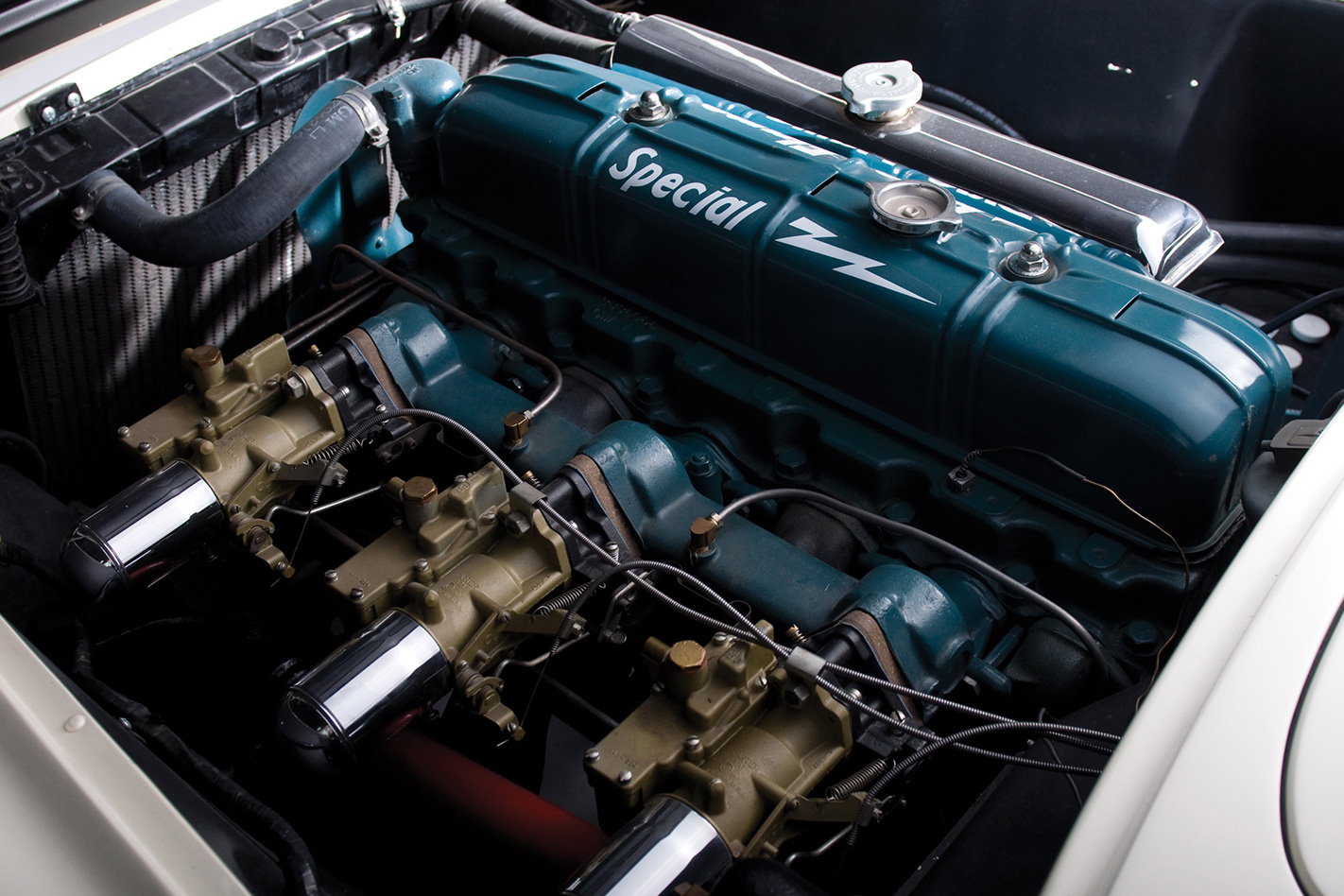
Fitting the frumpy, 3859cc ‘Blue Flame Six’ pushrod six was about cost and timing: Chev’s small-block V8 was still two years away. Corvette gained triple Carter carbs, 8.0:1 compression, a high-lift cam, solid lifters and dual valve springs, to rev beyond 5000rpm. Power was 112kW at 4200rpm; torque 302Nm at 2400rpm. Two-speed slushbox allowed 172km/h, with 0-100km/h in lazy elevens.
Meet the new squeeze
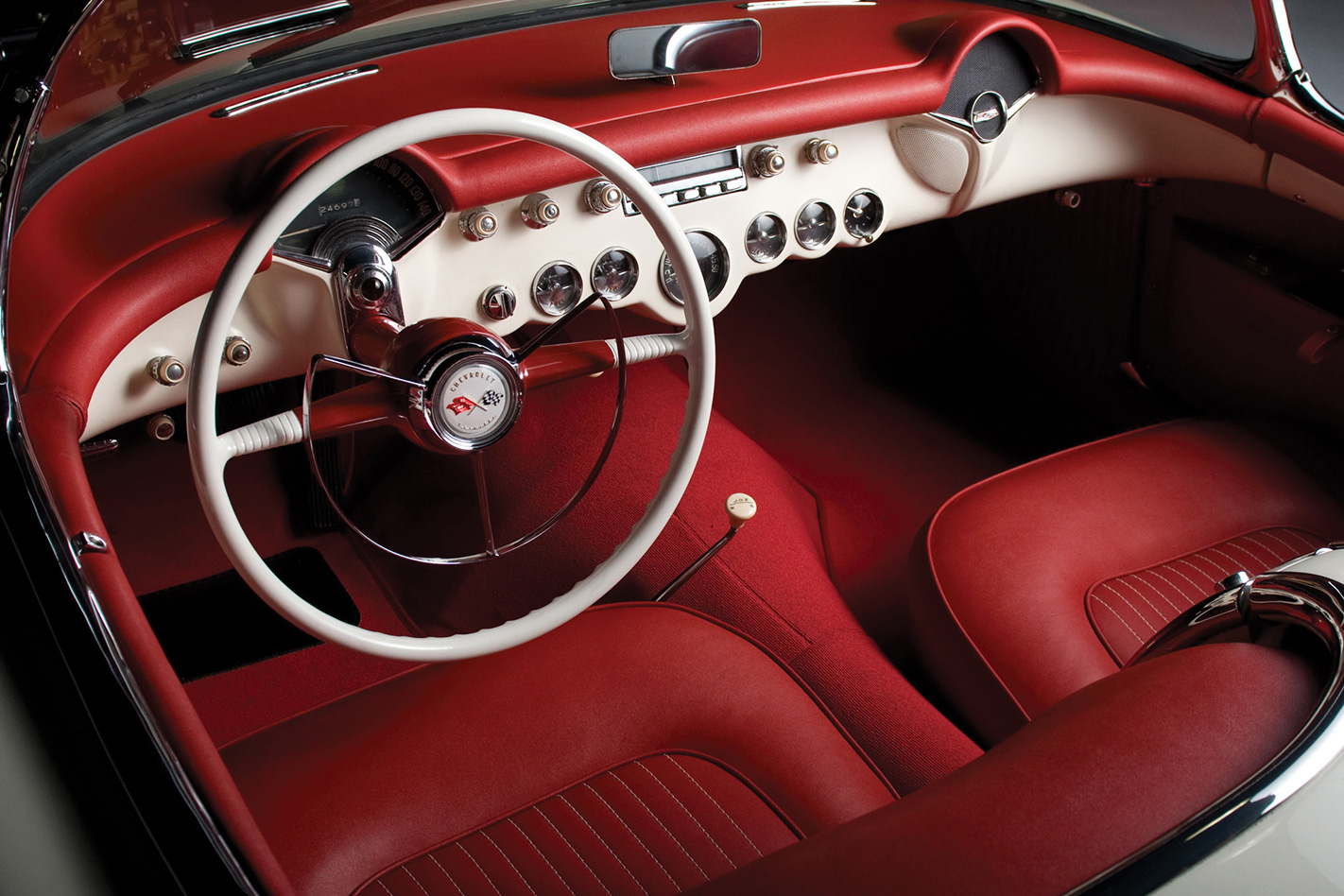
Corvette C1’s cockpit had notoriously cramped legroom for its two occupants. Door handles were inside and windows were removable, not roll-down. Bucket seats were still exotic in ’53, likewise the jet-age cockpit with centralised instruments, perhaps to suggest international ambitions. Folding canvas roof stowed neatly under the elegant panel behind cockpit. Fibreglass body allowed the integration of the radio antenna, moulded into the boot lid.

